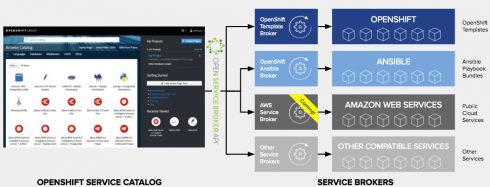
Red Hat has announced Red Hat OpenShift Container Platform 3.7. The latest release of this Kubernetes container application platform will enable IT organizations to build and manage cloud applications utilizing on-premise resources and integration with AWS.
Features include: OpenShift Service Catalog, OpenShift Template Broker, OpenShift Ansible Broker, Red Hat OpenShift Application Runtimes, and Red Hat Container-Native Storage 3.6.
“Red Hat OpenShift Container Platform 3.7 addresses these needs head-on by providing hybrid access to services through its service catalog, enabling developers to more easily find and bind necessary services to their business-critical applications–no matter where these services exist–and adding close integration with AWS to further streamline cloud-native development and deployment,” said Ashesh Badani, vice president and general manager of OpenShift at Red Hat.
C# 7.2
C# 7.2 has been released with several new features and capabilities. According to Microsoft, while 7.2 is just a point release, it adds a number of useful features. One of the main additions is the improvement on working with structs by reference, helping avoid unnecessary copying. It also adds a new Span collection of framework types. In addition, it features the ability to use an underscore as the first character in hex and binary literals.
More information is available here.
Kotlin/Native v0.4 is released
Kotlin/Native v0.4 has been released, featuring new additions such as support for accessing Objective-C APIs on iOS and macOS, WebAssembly target platform, and major changes to app development processes. New to this release is the automatic inclusion of platform-specific libraries, where previously these had to be generated by a tool when you needed them. There is also an improved debugging process that allows you to inspect variables at runtime.
Google announces new features for Google Assistant
Google has announced a new set of development features for Google Assistant. The app directory now has “what’s new” and “what’s trending” sections in the Assistant section to make it easier for users to find apps. There are also new subcategories in the app directory allowing for even more practical uses. There are improvements to implicit discovery, which is when a user connects to an app by a query rather than calling it directly by name. Apps can also now be built in Spanish, Italian, and Portuguese.
In addition, the release aims to improve user experience, such as the ability to speak into an Assistant device and have the information passed on to your phone to complete the experience. Apps will also now be able to send out asynchronous notifications to users. Google has improved analytics to provide more insight to the ways in which your app is being interacted with.






